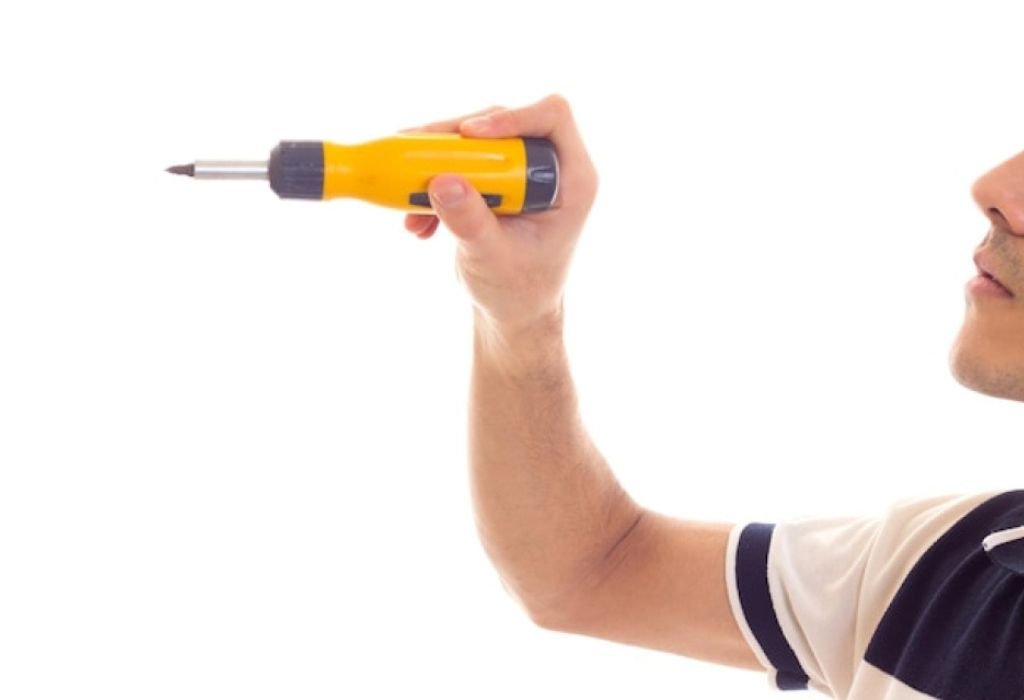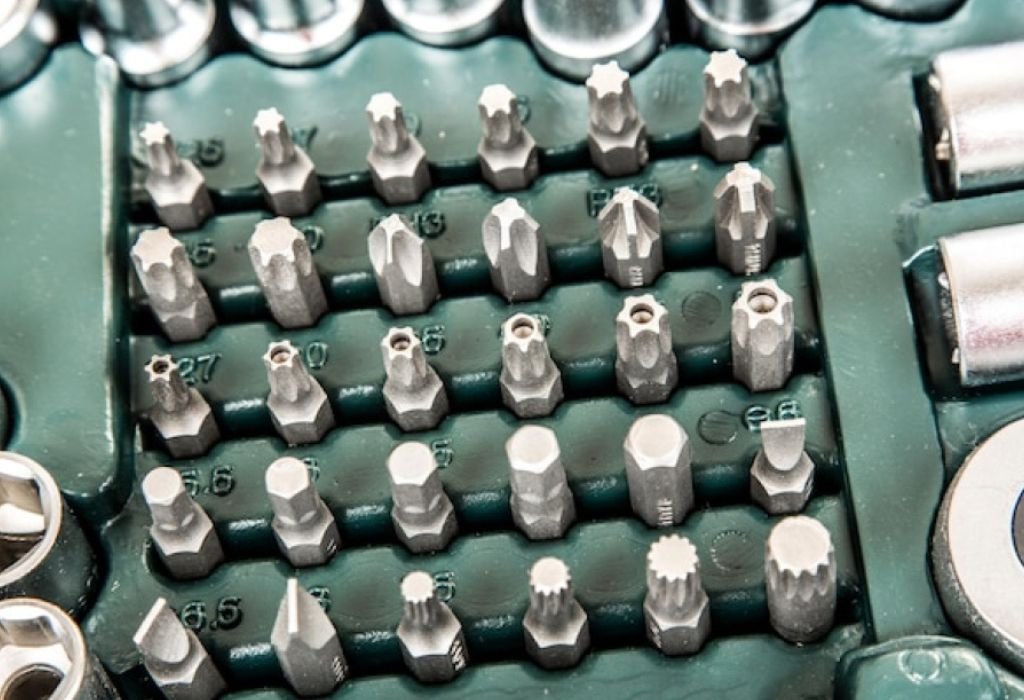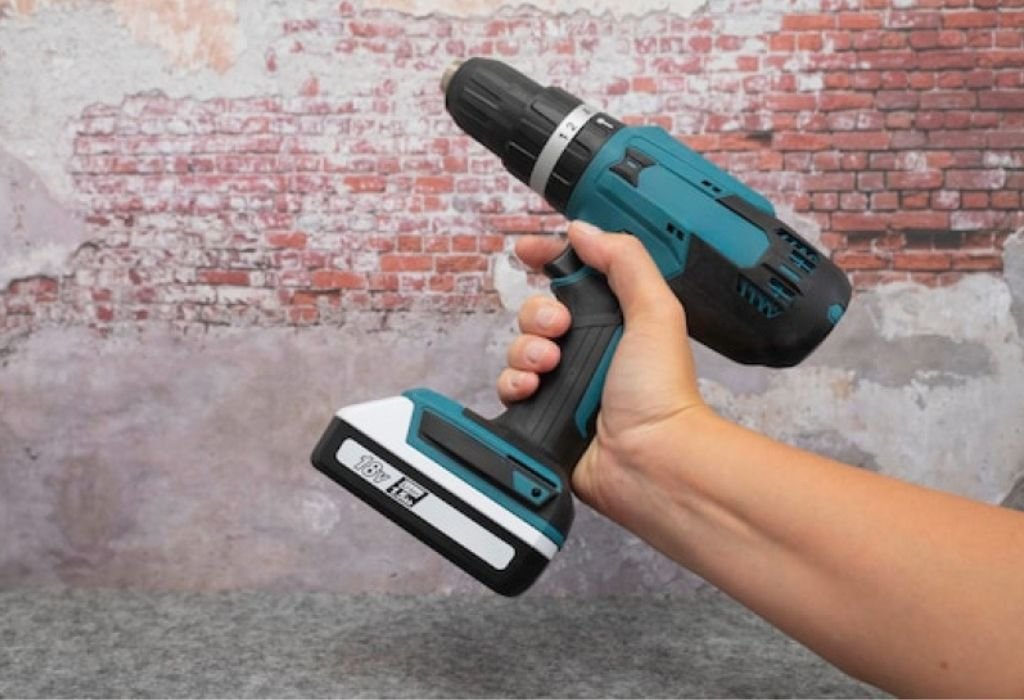A rusted screw sits stubbornly in place, refusing to budge no matter how much force is applied.
Each twist of a regular screwdriver only strips the head further, leaving frustration and wasted effort.
This is the moment when a hand impact driver proves its worth. Unlike standard screwdrivers, it transforms a single hammer strike into both a twisting force and a downward push.
This dual action not only delivers the torque needed to free seized screws and bolts but also prevents the bit from slipping out of the head.
Tool experts note that hand impact drivers excel at loosening stuck or corroded fasteners in engines, machinery, and outdoor projects where moisture causes rust.
A properly used impact driver can make the difference between salvaging a part and resorting to drilling out a damaged screw.
Safety remains essential. According to OSHA, thousands of injuries occur annually from improper use of hand and striking tools, highlighting the importance of eye protection, gloves, and correct technique (source).
Using the right bit, securing the workpiece in a vise, and striking with controlled force ensures both effectiveness and safety.
This guide explores step-by-step how to use hand impact driver tools, from choosing the correct bit to applying safe striking techniques. It also covers when to use penetrating oil, how to avoid common mistakes, and which maintenance practices keep the tool working for years. By the end, even beginners will know how to tackle the toughest screws and bolts with confidence.
Quick Answer — What a Hand Impact Driver Does and When to Use It

A hand impact driver is a compact tool designed to loosen or tighten screws and bolts that resist conventional methods. By striking the tool with a hammer, the force is converted into a sharp twist combined with forward pressure.
This dual action solves two problems at once: it delivers the torque needed to free corroded or seized fasteners, and it prevents the bit from slipping out of the screw head. For DIYers and mechanics, it’s the go-to solution when fasteners are rusted, overtightened, or partially stripped.
Unlike a powered impact driver, which uses a motor, the hand version is purely manual. This makes it more controlled, cost-effective, and ideal for smaller jobs or situations where precision matters.
What problems does it solve?
It breaks free rusted, stuck, or overtightened fasteners without stripping them.
Why does it reduce cam-out?
The hammer blow forces the bit deeper into the screw while applying twist.
Can it tighten as well as loosen?
Yes, the tool can be set to tighten or loosen depending on the need.
Is it different from a powered impact driver?
Yes, it relies on hammer strikes, not an internal motorized mechanism.
When should it not be used?
Avoid on delicate parts or thin materials that cannot withstand hammer blows.
Parts & How It Works (Beginner Tour)
A hand impact driver consists of a heavy metal body, a direction selector, and a square drive to hold bits or sockets. Inside, a splined mechanism converts the hammer strike into rotation.
The driver usually comes with a set of impact-rated bits. These include Phillips, slotted, Torx, and sometimes hex bits for bolts.
The mechanism is built to withstand repeated blows. Its rugged construction ensures the energy transfers into the fastener instead of damaging the tool.
What sizes are common?
Most come in 3/8-inch or 1/2-inch drive sizes for sockets and adapters.
Do sets include bits?
Yes, many include Phillips and slotted bits, with Torx and hex available in premium kits.
Can it drive sockets?
Yes, the square drive allows use with sockets for bolts.
How does the mechanism work?
It converts linear hammer force into controlled twisting motion.
Is there a direction selector?
Yes, twist the collar or cap to choose clockwise or counterclockwise.
Safety First — PPE, Setup, and Workspace
Safety should never be overlooked when using a hand impact driver. The combination of hammers and metal fasteners creates risks of slips, chips, and eye injuries.
Always wear safety glasses and snug-fitting gloves. Position your work in a vise or clamp to prevent movement.
Choose a hammer that matches the tool. A 16–32 oz hammer is suitable for most tasks, with heavier ones reserved for large bolts.
Which PPE is essential?
Safety glasses and snug gloves for grip and protection.
How should the work be held?
Clamp or secure it in a vise before striking.
What hammer works best?
A mid-weight hammer, around 16–32 oz.
Any bystander hazards?
Yes, keep people clear of flying debris.
Why is eye protection critical?
Metal chips and tool slips can cause serious eye injuries.
Step-by-Step — How to Use a Hand Impact Driver (Loosen)
Loosening screws is the most common use of a hand impact driver. The steps are straightforward but require care.
- Choose the correct bit for the fastener and seat it fully.
- Set the tool’s direction to loosen.
- Place the bit squarely into the screw head and apply gentle downward pressure.
- Strike the top of the tool firmly with a hammer.
- Repeat until the fastener breaks free.
How hard should the hit be?
Start light, increase force if the screw resists.
Why square alignment matters?
It prevents stripping by keeping the bit seated.
How many blows are typical?
Usually just a few, depending on rust and torque.
What if it won’t budge?
Add penetrating oil and try again after soaking.
Can it re-tighten afterward?
Yes, just switch the direction to tighten.
Step-by-Step — How to Use a Hand Impact Driver (Tighten)
This tool can also tighten screws and bolts. It’s helpful when you need to snug fasteners securely without slipping.
Set the direction to tighten and seat the bit firmly. Strike the tool with controlled hammer blows until the fastener is secure.
Will overtightening be a risk?
Yes, always finish with a torque wrench if specifications matter.
When is tightening with impact useful?
On screws prone to cam-out near final torque.
Should threadlocker be used?
Yes, when specified for vibration resistance.
How to finish to spec?
Switch to a torque wrench.
Is anti-seize recommended?
Yes, on bolts exposed to moisture or rust.
Bit Selection — Phillips vs JIS, Torx, Hex, and Slotted

Correct bit choice is critical. Using the wrong size or type increases the risk of stripping the screw head.
Many hand impact driver sets include Phillips and slotted bits. For motorcycles and Japanese equipment, JIS bits are essential.
Torx and hex bits are useful for automotive and machinery applications. Always ensure bits are impact-rated to handle hammer strikes.
Why do bits slip?
Wrong type, worn tips, or poor alignment.
What about JIS screws?
They need JIS-specific bits to avoid cam-out.
Are Torx bits better?
Yes, they resist slipping if seated correctly.
Impact-rated vs standard bits?
Impact-rated are hardened for repeated blows.
Does bit length matter?
Short bits reduce flex and transfer energy better.
Techniques for Rusted or Threadlocked Fasteners
Rusted or threadlocked fasteners may need extra effort. Preparation increases success rates.
Apply penetrating oil and let it soak before striking. Use a wire brush to clean the head and consider gentle heat to soften threadlocker.
Combine these techniques with firm, controlled blows for best results.
Penetrant first or impact first?
Penetrant first, then strike after soaking.
Does heat help?
Yes, controlled heat softens threadlocker.
Is anti-seize helpful?
Yes, apply during reassembly.
What if the head is rounded?
Switch to a screw extractor.
Can sockets be used?
Yes, via the square drive.
Direction Changes, Adapters, and Using Sockets
Most hand impact drivers allow direction changes. Rotate the collar or cap to select clockwise or counterclockwise.
The square drive accepts sockets for bolts, making the tool versatile for both screws and nuts. Use adapters cautiously and ensure they are impact-rated.
How to change direction?
Twist the collar to the desired setting.
Do adapters weaken impact?
Not if impact-rated and used correctly.
Can extensions be added?
Yes, but they may absorb some force.
Drive bolts as well as screws?
Yes, with sockets on the square drive.
Should bits be lubricated?
Keep them clean and dry for best grip.
Troubleshooting & Common Mistakes
Beginners often face common problems. Understanding them helps avoid damage.
Mistakes include choosing the wrong bit, failing to seat it, striking too softly, or misaligning the tool. Over-striking can also damage delicate hardware.
Bit keeps jumping out?
Check alignment and use a fresh bit.
Tool doesn’t rotate?
Verify direction selector is set correctly.
Screw head mushrooming?
Stop before further damage and use extraction tools.
Workpiece moving?
Always clamp or secure it.
Hand injuries?
Keep hands clear of the hammer path.
Maintenance, Storage, and Longevity
With care, a hand impact driver lasts for years. Clean and oil the mechanism periodically.
Store it in its case to protect bits and prevent rust. Replace worn or chipped bits promptly.
How often to oil?
A light coating every few uses.
When to replace bits?
At the first sign of wear or chipping.
Why use the storage case?
It keeps bits organized and prevents loss.
What are signs of wear?
Sloppy rotation or cracked housing.
Sharpen bits?
No, replace instead of sharpening.
Hand Impact Driver vs Powered Impact Driver

Manual and powered impact drivers serve different needs. Manual tools are slower but precise, safe, and cost-effective.
Powered drivers are faster and better for repetitive tasks but risk stripping delicate fasteners. Knowing when to use each saves time and avoids damage.
Which is safer for delicate parts?
Manual impact drivers.
When to use power instead?
On bulk jobs with many fasteners.
Is a breaker bar better for bolts?
Yes, for large bolts needing steady torque.
When should you stop using manual?
If damage appears after several blows.
Should a torque wrench follow up?
Yes, for accuracy in critical assemblies.
Buying Guide — What to Look For
Not all hand impact drivers are equal. Look for a sturdy body, clear direction selector, and impact-rated bits.
A storage case, multiple bit types, and compatibility with sockets add value. Quality tools last longer and perform better.
3/8 vs 1/2-inch drive?
3/8 for light work, 1/2 for heavy bolts.
Do all sets include Torx?
Not always—check kit contents.
Brand differences?
Choose reliable, heat-treated tools.
Worth paying more?
Yes, for durability and precision.
Is warranty important?
Yes, it protects your investment.
Conclusion
A hand impact driver is one of the simplest yet most powerful tools in a DIY or mechanic’s kit. With a single hammer strike, it converts frustration into success.
By choosing the right bit, aligning carefully, and striking with control, anyone can loosen or tighten stubborn screws and bolts. Regular maintenance ensures the tool lasts for years.
For anyone asking how to use hand impact driver tools, the answer is simple: pair the right technique with safety and patience. This small tool can save hours of work and prevent damage, making it an essential addition to every toolbox.

I’m John F. Nicholas, the founder, lead writer, and drill enthusiast behind 101drill.com. With years of hands-on experience in power tools and DIY projects, I created this platform to share practical knowledge, expert tips, and real-world insights to help others master the art of drilling.
